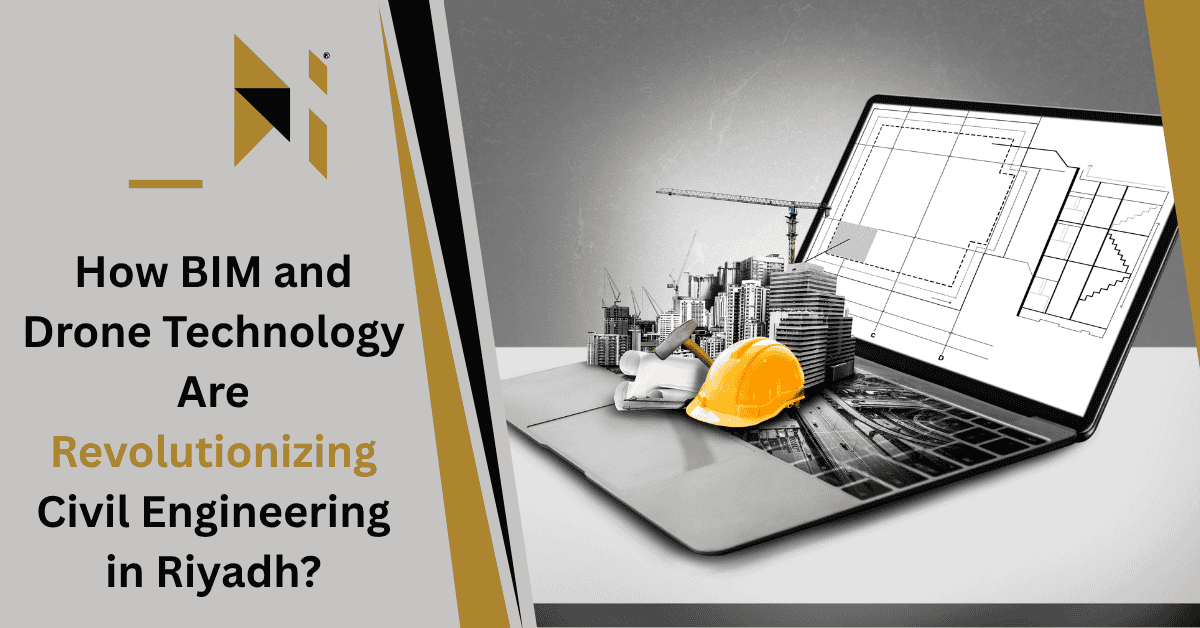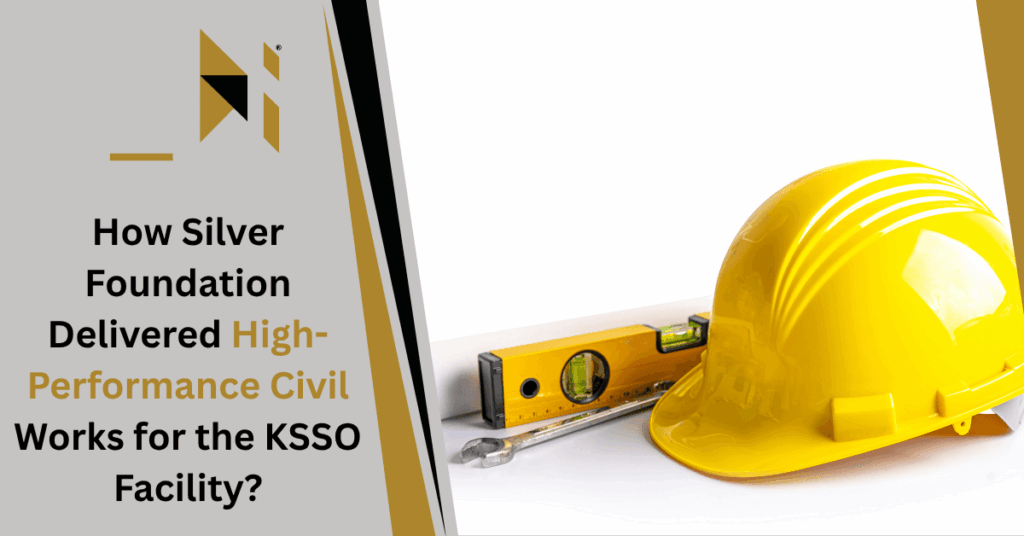Silver Foundation has established itself as a leader in civil works across Saudi Arabia. They have been delivering infrastructure projects that encompass roadways, transportation hubs, bridges, and public buildings. With professional civil and structural engineers, geotechnical teams, and advanced site technologies, sustainable, quality-driven construction meets regulatory standards. In recent years, the Kingdom has moved towards transformative development under Vision 2030. There has been a high need for modern infrastructure, cutting-edge tools, and digital innovation. As the demand for performance, precision, and sustainability grows, technologies like Building Information Modeling (BIM) and drones have emerged as cornerstones of civil engineering’s future.
Definition and Core Principles of BIM
Building Information Modeling (BIM) is the computerized method of civil project design and management. It develops intelligent 3D models that unite data, design and construction on a single platform. The main principles are collaboration, transparency and accuracy. They can be used to coordinate all the stakeholders. This results in the workflow being smoother and better communication for reliable results.
Applications in Infrastructure Projects
This is a critical component in complex infrastructure projects. In the case of roads, it improves the alignment design and the analysis of traffic flow. In bridges, it enhances structural detailing and structural safety inspections. The advantage of railways is accurate track planning and maintenance. Precise mapping and integration are beneficial to utilities such as water and power networks. It helps in providing sustainable, efficient and economical infrastructure systems.
Major Benefits of BIM
This tool reduces the project cost through the improvement of resource planning and cuts down delays. It reduces rework through detecting conflicts before construction occurs, which saves time and material. By having data-driven insights, the teams can make more informed and faster decisions. Overall, it can contribute to more smart and more sustainable project implementation with long-term operational benefits.
Insights into Drone Technology in Civil Engineering
Types of Drones Used in Construction
There are two common types used in construction projects, which include fixed-wing and multi-rotor. They come with fixed wings and are the best to use when one is surveying a large area, as they are able to cover the area quickly. Their multi-rotors are more versatile and can be used to inspect a particular location in detail. Both types are helpful in terms of data, decrease manual labour, and assist the engineers in obtaining greater accuracy and productivity.
Key Applications in Riyadh Projects
They are highly used in key construction projects in Riyadh. In the case of land surveying, they record precise topographic information quickly and in detail. They are used in progress monitoring to monitor the progression of development and keep the stakeholders updated on the progress. In the case of safety checks, they will be able to reach high or dangerous locations without endangering the personnel. This makes the project management safer, smarter and more efficient.
Significant Benefits of Drone Integration
They have the advantage of being faster and more precise in gathering data about the project than manual surveys. They reduce risks because they deal with checks in hazardous or inaccessible places. Decision-makers are kept updated on events in real-time and can react promptly to challenges. This integration enhances safety, efficiency and facilitates a better flow in all phases of the civil engineering projects.
Scenario of How BIM and Drone Technology Work Together
BIM and drone technology are complementary and can be used to improve efficiency, precision and safety of constructions. It is used to give a digital representation of a building design as well as geometry, materials and scheduling information.
The Drones, on the other hand, are the devices that are used to record real-time aerial images and location information using high-resolution cameras and sensors. Combined, drones will be able to survey construction sites fast and transfer the data to BIM systems, allowing accurate tracking of the progress and checking it against the design models. This saves on the time of manual surveying and minimizes errors.
Monitoring dangerous or inaccessible locations is another application of drones that will enhance the safety of workers and the accuracy of the data. The project managers will be able to see the differences, reveal problems at the initial stage and make the correct decisions by combining the data of drone-captured images and models.
The combination of both devices is beneficial as it simplifies the work process. It also reduces expenses and improves the quality of the final results of the projects. This is the reason why it makes it an effective solution to contemporary construction management.
Benefits of BIM and Drone Technology in Civil Engineering
Economic Advantages
BIM offers accurate computerized models that reduce design mistakes and waste of materials. Drones also improve the monitoring of the sites, which minimizes the costly rework, and mismanagement of resources. Collectively, they reduce the construction expenses and enhance efficiency.
BIM simplifies planning and coordination, and drones accelerate surveys and inspections. Such an integration saves time, speeds up the approval of projects, and makes decisions faster. This is assisting Riyadh in completing infrastructure projects on time, which meets the development targets of Vision 2030.
Environmental Benefits
BIM enables the modelling of energy efficiency, water usage and material selection before the construction process. Drones will offer real-time environmental evaluations, making the practices sustainable at the site. This will create environmentally friendly cities in line with the green programs in Riyadh.
Drones are used to track dust, emissions, and land impact without using invasive techniques. With predictive analysis of BIM, engineers can reduce the adverse effects on the environment. They can preserve ecosystems and adhere to sustainability standards. This will contribute to the smart city vision of Riyadh.
Social and Safety Improvements
Drones reduce the number of risky visits to the site in unsafe regions, and BIM allows recognizing potential risks before they occur. This reduces accident occurrences at the workplace. It also improves safety planning and safeguards the employees, resulting in safer construction conditions in Riyadh.
BIM and drones simplify the construction process with less impact on ordinary lives. Proper planning will minimize traffic diversion, noises and delays and drones will monitor the progress effectively. This promotes the aspirations of Riyadh of having modern, habitable city areas, and satisfaction among the people.
Challenges and Limitations You Should Know About
BIM and drone technology implementation in Riyadh is associated with several challenges. The regulatory factor in Saudi Arabia is another significant obstacle. Thus, the construction regulations and laws of drone operations are still developing, and they need definite guidelines on safe and legal practices.
Initial expenses and training requirements are also a challenge. State-of-the-art equipment, software, and a qualified workforce require substantial spending and developing infrastructure. Moreover, there are issues of data security and privacy, particularly when sensitive data of infrastructures is gathered and stored in a digital format.
In the absence of sound cybersecurity measures, such information may be susceptible to unauthorized access. These issues will be Key in achieving the maximum benefit and guarantee compliance, cost-effectiveness, and confidence in the urban development projects in Riyadh.
Outlook Beyond 2025 of BIM and Drone Technology
BIM and drone technology in Riyadh is a promising future that is being fueled by innovation and Vision 2030. The combination of AI and machine learning will strengthen the automated analysis of data, real-time decision-making in design, construction, and asset management.
The collaboration with smart infrastructure and IoT also allows turning Riyadh into a digitally connected city. Both of them are connected with sensors to deliver precise monitoring and performance data. Also, predictive maintenance of the infrastructure will be one of the main benefits. Drones will be able to survey roads, bridges, and utilities, and BIM models will forecast the wear and indicate the proactive measures.
Combined, these innovations will make Riyadh a smart city leader in terms of sustainability, efficiency, and resilience.
Conclusion
BIM and drone technologies are revolutionizing civil engineering in Riyadh, reshaping how projects are designed, executed, and maintained. By enabling real-time data, precise modeling, and efficient resource use, they support Saudi Arabia’s push toward sustainability and smart urban growth under Vision 2030. Silver Foundation continues to integrate such advancements, reinforcing its role in delivering efficient, future-ready civil works across the Kingdom.
Frequently Asked Questions
1. How is BIM improving construction efficiency in Riyadh?
It improves efficiency in Riyadh by enabling accurate designs, reducing rework, streamlining communication, and ensuring faster project delivery with fewer resource losses.
2. Why are drones becoming essential in civil engineering projects?
They provide real-time aerial data, accurate surveying, safety inspections, and progress tracking. This makes them crucial for civil engineering projects in Riyadh’s fast-growing infrastructure.
3. What role do BIM and drones play in Vision 2030?
Both support Vision 2030 by enhancing urban planning, ensuring sustainable development, and accelerating large-scale infrastructure projects across Riyadh and Saudi Arabia.
4. Are BIM and drone technologies cost-effective for Riyadh projects?
Yes, they reduce material waste, prevent costly delays, minimize errors, and optimize resource use. This is making them highly cost-effective for growing civil engineering projects.




